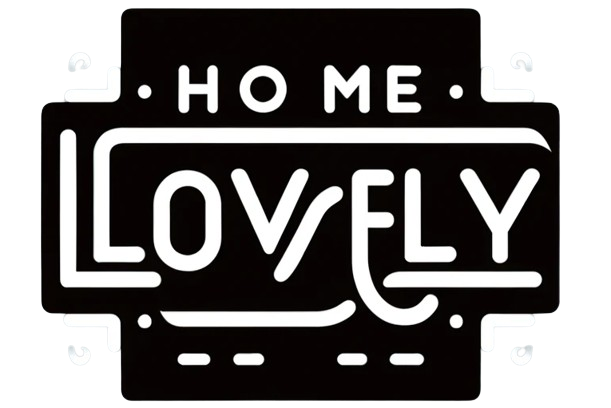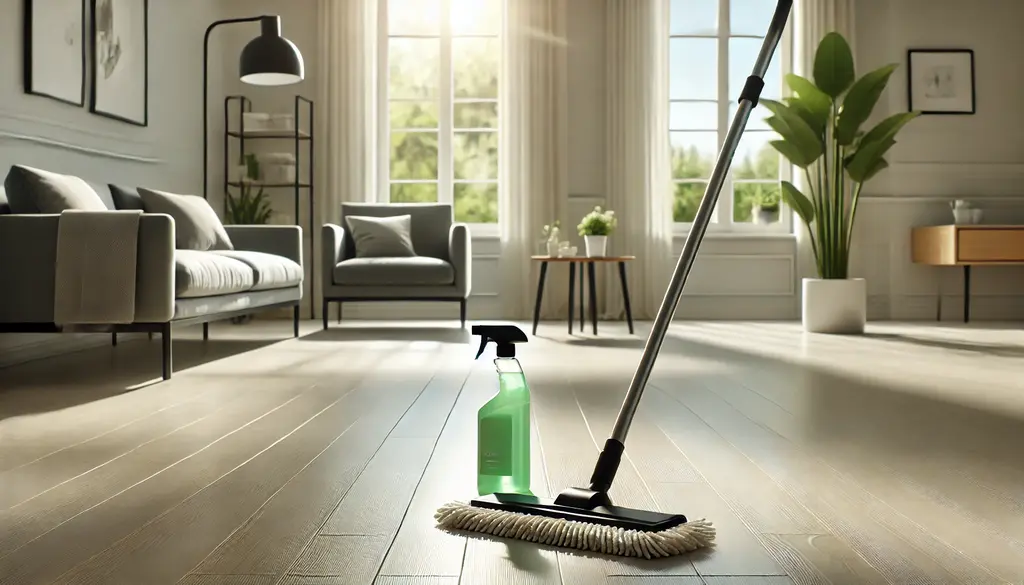Laminate floors are a fantastic choice for many homes. They’re affordable, versatile, and offer the look of hardwood without the high maintenance and price. But they also need special care. Cleaning laminate floors the right way can keep them looking new and prevent damage, such as scratches, dullness, or water warping.
In this guide, we’ll walk you through everything you need to know about maintaining your laminate floors, from everyday cleaning to tackling tough stains and preventing long-term wear. Let’s begin our short guide about how to clean laminate floors without damaging the floor!
Learn more: How to Prep and Paint Kitchen Cabinets?
Why Laminate Floors Need Special Care?
Laminate flooring may resemble hardwood, but it has a unique composition that demands its own set of cleaning practices. Laminate is made from layers of wood fiber or particleboard, fused together with a printed layer that mimics wood, stone, or tile. A transparent wear layer protects this surface, but it’s still vulnerable to scratches, water damage, and dulling if not cleaned properly.
Unlike traditional hardwood, laminate cannot be refinished. That means any damage, whether it’s scratches, swelling, or permanent stains, can’t be buffed out. Using the wrong cleaning solutions or too much water can cause the layers to swell or bubble. To maintain that like-new look, you’ll want to follow the best practices we’ll share in this guide.
Tools and Materials to Clean Laminate Floors
Before you start cleaning, having the right tools is essential. Here’s a quick look at what you’ll need:
- Soft-bristle broom or vacuum: A vacuum designed for hard floors, ideally one without a rotating brush, is perfect for laminate. If you use a broom, make sure it has soft bristles to avoid scratches.
- Microfiber mop: Microfiber mops are gentle on laminate and are highly effective at lifting dust and grime without leaving residue.
- Cleaning solution: A laminate-specific floor cleaner is ideal. If you prefer a DIY approach, a mixture of white vinegar and water (mixed 1:1) is an excellent choice.
- Soft, dry microfiber cloth: Essential for drying the floor after mopping, preventing any moisture damage.
With these tools, you’ll be equipped to keep your floors looking pristine without the risk of damage.
Step-by-Step Guide to Cleaning Laminate Floors
Cleaning laminate floors is all about being gentle. Here’s a step-by-step approach to keep them spotless:
Step 1: Dusting and Sweeping
Dust and debris can accumulate quickly on laminate floors, especially in high-traffic areas. Regular sweeping or vacuuming is essential to avoid tiny scratches caused by particles getting dragged underfoot.
Use a soft-bristle broom or a vacuum designed for hard floors. When vacuuming, avoid attachments with rotating brushes, as they can leave marks or scratches. Vacuuming or sweeping two to three times a week is ideal for high-traffic areas, while once a week may suffice for less-used spaces.
Step 2: Mopping
Laminate floors require minimal water to stay clean without damage. Use a microfiber mop, which works wonders at lifting grime without leaving residue. Dampen the mop with your chosen cleaner, and wring it out thoroughly so it’s only slightly damp. This is key—too much water can seep into the seams of your laminate and cause warping.
For store-bought cleaners, spray the cleaner directly on the mop head rather than the floor to avoid over-wetting. For DIY solutions, you can use a 1:1 vinegar and water mixture, or a mixture of one part rubbing alcohol, one part vinegar, and two parts water. Vinegar helps break down dirt and grime while being gentle on the laminate finish.
Step 3: Drying the Floor
Drying your floors is essential to avoid water damage. Laminate floors can’t handle excess moisture, so always follow mopping with a dry microfiber mop or cloth. Wipe the floor in a circular motion for an extra shine, making sure to dry up any remaining moisture.
Tackling Tough Stains on Laminate Floors
Sometimes, regular cleaning isn’t enough to get rid of tough stains. Here’s how to handle some of the most common stubborn spots:
- Grease and Oil Stains: Dab a small amount of dish soap onto a soft cloth and gently rub the stain. Follow with a lightly dampened cloth to rinse, then dry immediately with a microfiber cloth.
- Ink and Crayon Marks: Apply a small amount of rubbing alcohol to a soft cloth and rub gently. Avoid scrubbing to prevent dulling the finish. Rinse with a damp cloth and dry.
- Scuff Marks: Use a soft eraser or a dab of jojoba oil on a soft cloth. Rub gently to remove the mark, then wipe with a clean, dry cloth.
These techniques allow you to tackle tough spots without using harsh chemicals or abrasive scrubbing, keeping your floors safe from unnecessary wear.
DIY Laminate Floor Cleaners
If you prefer a homemade approach, several household ingredients can make excellent laminate-safe cleaners:
- Vinegar Solution: Mix equal parts water and white vinegar for a gentle cleaner that won’t leave residue. This mix effectively removes dirt and provides a fresh, streak-free shine.
- Rubbing Alcohol Mix: Combine one part rubbing alcohol, one part white vinegar, and two parts water for a solution that dries quickly, ideal for laminate. Rubbing alcohol cuts through grease and evaporates quickly, reducing the risk of moisture damage.
- Black Tea Solution: Brew a few black tea bags, let them cool, and use them as a cleaner. Tannins in tea can add a slight polish and help hide minor scratches on dark laminate floors.
Always test any homemade cleaner on a small, inconspicuous area first to ensure it doesn’t react poorly with your floor’s finish.
Common Mistakes to Avoid When Cleaning Laminate Floors
To keep your laminate looking like new, avoid these common mistakes:
- Using Too Much Water: Laminate floors are especially susceptible to water damage. Excess moisture can seep into the seams and cause warping or bubbling.
- Using Abrasive Tools: Avoid scrub brushes, steel wool, or any tool with stiff bristles. These can scratch the laminate surface, dulling its shine.
- Applying Wax or Polish: Wax and polish products designed for hardwood are a no-go for laminate floors. These products can leave a sticky residue or cause a cloudy appearance.
Keeping these pitfalls in mind can prevent unnecessary wear and keep your floors looking great over the long term.
Protecting Your Laminate Floors for Longevity
To extend the life of your laminate floors, a few preventative measures go a long way:
- Use Mats and Rugs: Place mats at entrances to trap dirt and grit before they reach your floors. Rugs in high-traffic areas reduce wear and prevent scratches.
- Add Felt Pads Under Furniture: Attach felt pads to the legs of chairs, tables, and other furniture to avoid scratches when moving them.
- Avoid Sharp Objects and Heels: High heels and sharp objects can easily damage laminate, leaving dents or scratches.
These small habits can preserve the beauty and durability of your laminate floors, saving you from costly repairs.
Conclusion
Laminate floors can look beautiful for years with the right care. By following gentle, regular cleaning methods, using the correct tools, and avoiding harsh chemicals, you’ll preserve the look of your floors and protect your investment. Remember, laminate floors require special attention due to their composition, so prioritize dry cleaning techniques and avoid excess moisture. With these tips, your laminate floors can stay as clean and shiny as the day they were installed.
Frequently Asked Questions (FAQs)
Can I steam-clean laminate floors?
No, steam cleaners use high heat and moisture, which can damage the laminate. The heat can cause the floor to warp, and the moisture can penetrate the seams.
How do I prevent a cloudy film on my laminate?
Using too much product or a waxy cleaner can create a cloudy film. Use laminate-specific cleaners or the vinegar-water solution for a residue-free clean.
What’s the best way to remove pet stains?
Pet stains can be cleaned with a mild vinegar solution. For urine stains, a mixture of baking soda and vinegar can help neutralize the odor.

